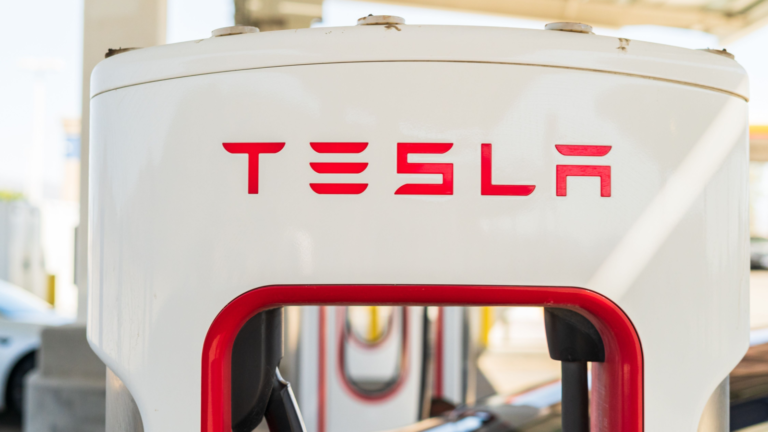Tesla (NASDAQ:TSLA) stock is undergoing a reset in 2024. Shares are down 22% after just a month of trading as the electric vehicle maker dialed back expectations for growth. It says this year won’t be able to keep pace with what investors saw last year. As overall EV demand weakens, a Tesla stock analysis indicates the carmaker is in a tough spot.
Price cuts aren’t boosting sales which will lead to further margin erosion. Inventory is rising and profits are taking a hit. Yet with the stock now tumbling to under $200 a share is this the time to buy in? Let’s see whether this is a great opportunity for long-term investors or if there is still further to fall.
A Tesla Stock Analysis
CEO Elon Musk told analysts, “Tesla is currently between two major growth waves.” The first one was the release of the Model 3 and Y globally which allowed Tesla to set production and delivery records.
Now it’s in a lull. The next wave won’t start until it releases its next-generation vehicle. And because Tesla is focusing on that iteration, volume growth will be lower in 2024. Maybe beyond.
The EV industry is experiencing growing pains. While much of that was because of rampant inflation that jacked up the cost of everything, including EV prices, manufacturers priced themselves out of the market of what consumers could afford.
The price cuts by Tesla and other EV makers helped narrow the gap considerably. Government subsidies in the form of tax credits have virtually eliminated any difference. The average cost of a new EV is just under $51,000 while the average gas-powered vehicle is $48,000. That’s still expensive, no matter which way you go.
Consumers are also unimpressed with the limitations of EVs whether it’s distance on a single charge, the need for more charging stations, or the difficulty of charging EVs in cold weather.
It’s slowing EV sales growth. Cox Automotive says EVs accounted for 3.2% of all vehicles in 2021 and grew to 5.6% in 2022, a 2.6% increase. Although EVs now represent over 7% of all vehicles sold, the growth rate was just 1.8% year over year.
The EV Market Evolved
Many buyers believe a hybrid vehicle is the preferable option. A record 1 million-plus hybrid vehicles were sold last year, a 76% increase from 2022. Unlike U.S. automakers, Toyota (NYSE:TM) presciently saw going all-in was not a smart option.
Instead, it invested across the full spectrum of energy options: fossil fuels and EVs, especially in its hybrid vehicles. Quarterly profits doubled.
General Motors (NYSE:GM) and Ford (NYSE:F) both made big bets on full-electrics and are paying the price. General Motors gave up on selling 400,000 EVs by the middle of this year while Ford canceled or postponed investments totalling $12 billion for EVs.
Ford, though, is the second-biggest hybrid manufacturer behind Toyota. It plans on producing enough hybrids to quadruple sales within five years. Now GM is planning on including plug-in hybrids in its product lineup.
This puts Tesla in a tight spot. As the leading EV maker, any industry slowdown is going to show up in its sales numbers. Plus it sounds like it’s not even really trying at the moment. Instead it is betting on its next-generation EV to move the needle.
Investors Should Plug in Elsewhere
Investors are better served waiting for that to happen because there’s no guarantee it will happen. Tesla EVs are a modern marvel and the technology packed into them is awe-inspiring. But we’ve moved beyond the early adopter phase.
Most everyone who really wanted an EV has one. Now manufacturers, including Tesla, need to convince the rest of the buying public EVs truly are the future.
Pricey, new, gizmo-filled vehicles aren’t necessarily it. Besides new cars, Tesla may find its Cybertruck is a no-go. Demand for a pickup truck whose base price starts at $60,000 will be weak. Ford recently cut production of its Lightning F-150 pickup.
Musk has the right idea in one respect to cut the prices of his cars to make them more affordable. But until they’re at a price point where the masses can afford them, Tesla faces a bumpy road. TSLA stock trading at 44 times earnings, 6 times sales, and well over 100x free cash flow at a time the EV maker is facing even stronger headwinds says this is not a time to buy.
On the date of publication, Rich Duprey did not hold (either directly or indirectly) any positions in the securities mentioned in this article. The opinions expressed in this article are those of the writer, subject to the InvestorPlace.com Publishing Guidelines.

